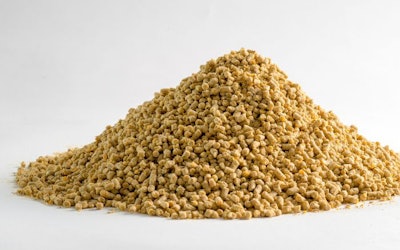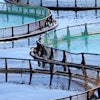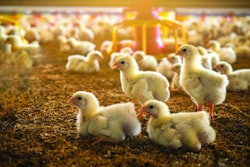
While production of livestock and poultry feeds in Great Britain hits the lowest figure for six years, almost all producers were paying more for their feed in the previous quarter than at any other time.
In Great Britain, 5.41 million metric tons (mmt) of animal feed was produced in the period July to November 2022, according to the latest figures from the Agricultural and Horticultural Development Board (AHDB).
Great Britain comprises England, Scotland and Wales — or the United Kingdom (U.K.) excluding Northern Ireland. A levy board, AHDB represents the country’s farmers, growers and others in the supply chain for selected agricultural products, including grains and livestock.
Five percent below the same period of 2021, this is the lowest volume for the start of the season since 2016-17, said Tom Price, an AHDB analyst.
Lower production of poultry, pig feed
At 2.48 mmt, total poultry feed production in Great Britain was 184,000 metric tons (mt) for the period — a year-on-year reduction of 7%.
Accounting for about one-third of the total poultry feed market are the integrators, with output of 844,000 mt. This comprised 644,700 mt for broilers, 98,300 mt for turkeys and 40,600 mt for layers. Year-on-year, these volumes are down by 1%, 20%, and 3.3%, respectively.
For other poultry sectors, broiler feed output was down 5% at 854,500 mt, while production of layer compounds was almost 10% lower at 438,300 mt.
In the British egg and poultry meat sectors, AHDB reports that producer margins reduced sharply over the past months. Furthermore, pressure has been ramped up by widespread outbreaks of avian influenza, as well as changes in consumer purchasing arising from the ongoing cost-of-living crisis. As poultry producers cut back on production, sales of feed to the layer and broiler sectors have each fallen back by around 50,000 mt.
For pigs, feed production for the same period was 9% lower year-on-year. Total output destined for this sector amounted to 813,900 mt.
Compared with July to November 2021, 33,000 mt less feed was produced for finishing pigs, and the reduction was 22,000 mt for the breeding herd. AHDB attributes this contraction to a backlog of pigs kept back on farms after disruption from the coronavirus (COVID-19) pandemic, and a severe shortage of slaughterhouse workers in 2022. According to this source, the backlog of animals held on-farm has now largely been eliminated.
At 162,400 mt, feed production for breeding pigs was down more than 12% compared with the previous year.
Mixed fortunes for ruminant feeds
Over the past year, the ruminant sectors have experienced different market trends.
The only sector to have expanded over this time has been sheep feed. Volume is up 10,000 mt or 4.8% year-on-year at 215,400 mt for the July-to-November period.
Overall, cattle feed production was down by 1.8% at almost 1.6 mmt. However, output of dairy compounds increased by 1.3% year-on-year to 876,600 mt.
Changing feed raw material usage
As a consequence of the decline in feed production, grain usage in Great Britain is also falling.
According to AHDB estimates, wheat is the most used ingredient in British feeds at 1.35 mmt for the July-November period of 2022. Year-on-year, this figure is down by 3%, while usage of barley was 26% lower, and oats by as much as 35%. Almost 20% more whole and flaked corn was used in this period compared with the previous year, and 17% more sunflower cake and meal. In contrast, there was less usage of soybean and rapeseed meals.
In the study period, integrated poultry producers used slightly less wheat in diets, while the volume of barley used was down by 46% year-on-year.
Record high feed prices in Great Britain
For the latest complete quarter — July to September 2022 — the U.K. government’s agriculture department, Defra, has released figures showing feed costs for the main livestock groups at or near record levels.
Per metric ton, average prices for poultry feed over this period were GBP437 (US$543.80). For pigs, the average was GBP392, for sheep GBP383, and cattle GBP366. Compared to the previous quarter, these figures represent increases of around 11% for sheep feed, 8% for cattle, and 2% for poultry. For pig feeds, the average was slightly down from the previous three-month period.
Defra notes that the poultry feed price published is weighted by production of compound feeds from feed millers, and excludes sales within the integrated poultry sector. For sheep, feed prices fluctuate during the year, depending on the relative production volumes for breeding and finishing animals. Cost of calf milk substitutes is excluded from its cattle feed figures.
This month, the U.K. Competition and Markets Authority referred a proposed joint venture between two U.K. feed companies for an in-depth investigation. Involving ForFarmers U.K. Ltd. and 2Agriculture Ltd., the closing deadline for the investigation into the merger has been set for June 25.















